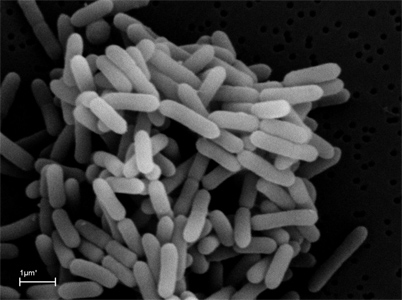Description of the value and reasons for sequencing Anaerocellum thermophilum Anaerocellum thermophilum is a strictly anaerobic, asporogenous, Gram-positive bacterium that was isolated from a continental thermal spring in Kamchatka, Russia. It is a thermophile, growing optimally at 75°C, and utilizes a variety of polymeric carbohydrates as carbon and energy sources. These include crystalline cellulose, hemicellulose, pectin, starch, and gum Arabic. The organism grows rapidly, typically reaching cell densities above 108 cell/ml within 18 hours of growth at 75°C. It also grows on unprocessed plant biomass, including hardwood (poplar) and on grasses with low lignin (napier grass, bermuda grass) and high lignin (switchgrass) contents. Acetate, lactate, carbon dioxide and hydrogen are the predominant end products. A. thermophilum has several properties that make it of potential utility in biomass to biofuel conversion systems. It is the most thermophilic microorganism known to efficiently hydrolyze crystalline cellulose, it simultaneously utilizes cellulose and hemicellulose, which are the main components of plant biomass, it can degrade lignocellulosic biomass without chemical pretreatment, and it produces hydrogen gas as a main end product. |
||
|
||
Anaerocellum thermophilum

